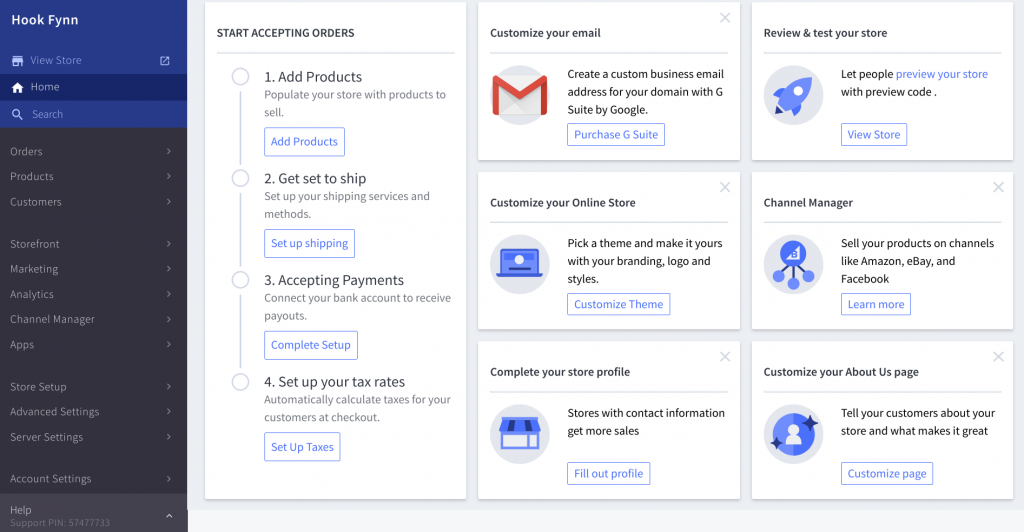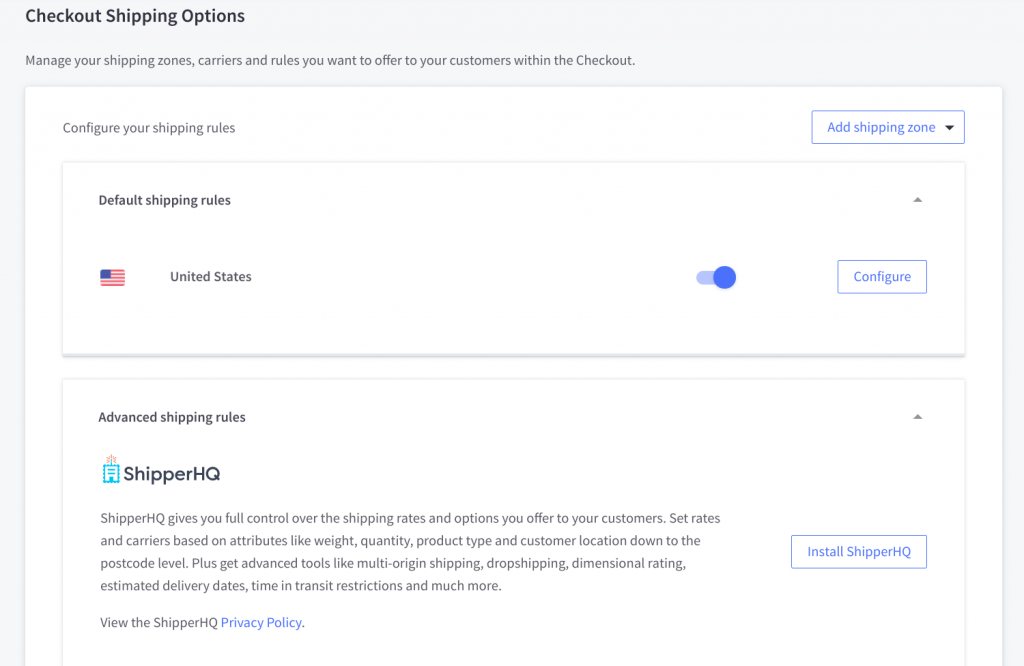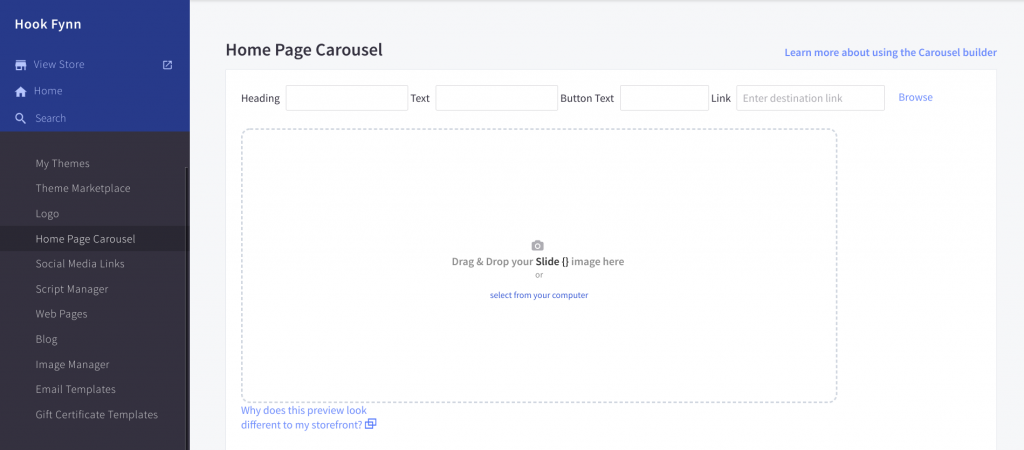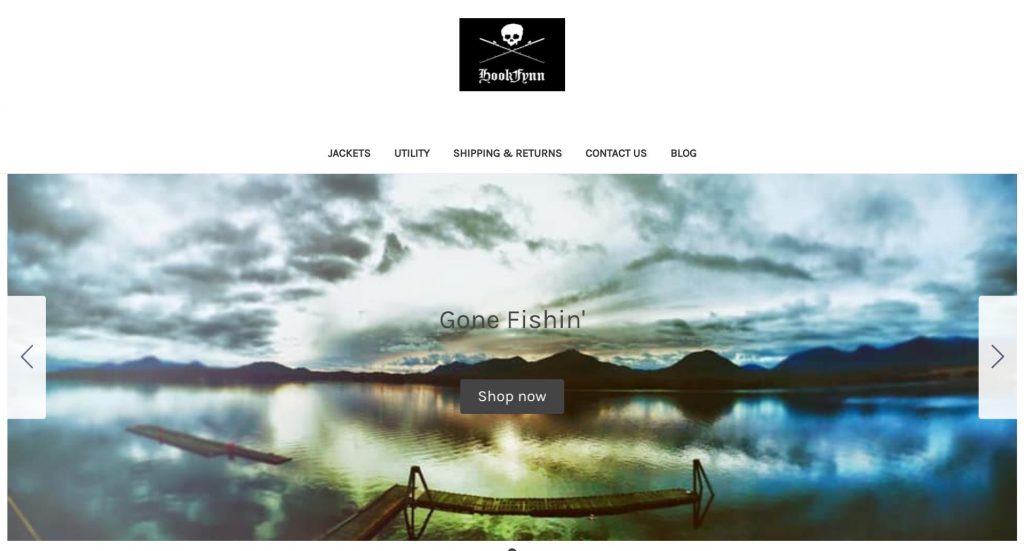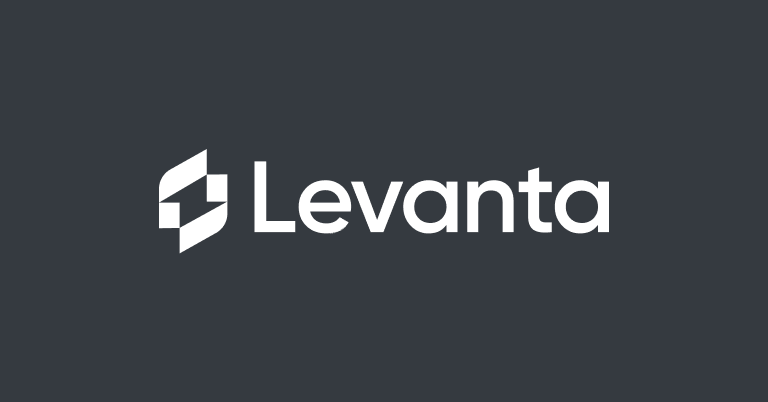
An e-commerce platform that started life as a content management system, BigCommerce is the best of both worlds. BigCommerce is the software powering some of the best looking and top earning stores on the internet. Priced for any size business and definitely worth a look.
Silicon Valley is a place where people value a good story behind a company. The Two-Guys-in-a-Garage scenario is a favorite trope and has been since the 1970’s when two guys named Steve built an empire in a 2-car setup while one of them was tripping on LSD. Great story.
By that measure, the story of BigCommerce isn’t nearly as interesting or surprising, but it’s not an apples-to-apples comparison. It’s an Apple to BigCommerce comparison, and BigCommerce has plenty of its own mystique to have created a proper Silicon Valley legend. For one thing, their Australian founders put their headquarters in Austin, TX, years before they opened an office in San Francisco, which is about the most unorthodox thing a tech startup can do. And when they finally did open their Valley offices in 2014, they engaged in the age-old practice of poaching top talent from other companies. But they did so with a knowing wink, by having their people hang around at other companies’ employee shuttle stops and sell people on the idea of leaving their current workplace behind for the world of BigCommerce. Along with their sales pitch for the company, prospects received a cup of artisanal coffee and—to put a fine point on what they were up to—a poached egg sandwich.
This recruiting drive occurred about halfway between their Series C and D funding rounds. Their most recent round, Series F, happened in 2018, and the $64 million they raised then brought their total funding to nearly $220 million dollars. But the really interesting thing here is that the two founders, Eddie Machalaani and Mitch Harper, bootstrapped their way to $10 million in annual revenue before they ever accepted a penny from outside investors.
Machalaani and Harper have the dotcom version of the Two Steves’ meet-cute, having replaced the Cupertino garage with a chatroom for PHP developers. This was back in 2003-ish, when each was having similar problems with their code and they’d found each other in pursuit of some feedback from other professionals. When they learned they were both in Sydney, a friendship and then business partnership formed. Their original product was called Interspire, a WYSIWYG HTML editor that far surpassed anything available at the time. Other products offered a similar graphical interface to lay out a website and then generate the code, allowing people without any coding knowledge at all to create websites. They generally worked as advertised but Machalaani and Harper noticed something about the websites people made using these products: they were awful.
They understood the reason for this: you didn’t just need to know how to code to make a good website. You also needed to have an understanding of graphic and user-interface design. What brought Interspire its first million dollars in its first year of existence was the creation of templates. Templates are the norm for most content management systems today, but Interspire may have been the first to offer them. If they weren’t the first, then their templates were the best looking, because it wasn’t long before the platform grew to accommodate e-commerce and they were doing $10 million in sales a year.
BigCommerce was a natural evolution of this chain of events. A hefty part of the software today is its CMS, and the way it enables customers to build out great looking websites. But it’s the e-commerce functions that are now the core focus. Builtwith.com show nearly 50,000 live websites powered by BigCommerce (a number which grown every year since it launched).
This growing list of customers includes such notable companies as Fitbit, Skullcandy, Nikon, Gillette, Ivory, Ben & Jerry’s, and Toyota.
They’ve come a long way since that PHP chatroom, and as you read on you’ll see why.
Pricing
BigCommerce has two different “offerings”—there’s BigCommerce Essentials, which is the DIY SaaS platform, and BigCommerce Enterprise, which is a more customised experience for their larger customers. This review covers the Essentials, which is offered at three levels of service at prices almost identical to Shopify. BigCommerce does it a little differently, though.
First, BigCommerce does not have its own payments service. You’re free to use whichever payment gateway you like, and BigCommerce doesn’t charge transaction fees. They do offer a built-in payment option through a PayPal partnership, and that comes at a normal, credit-card processing cost. Each level of plan pays a different fee, which you’ll see.
Also, there are revenue caps at each level of subscription, and you get charged for going over. We’ll get into that in more detail after we list what each plan offers:
- Standard, $29/mo — Unlimited products and staff accounts to manage your store, up to $50k per year in sales, full CMS with blog, multiple sales channels, real time shipping quotes, mobile payments, credit card payments through PayPal at 2.9% + 30 cents per transaction, 24/7 live agent support
- Plus, $79/mo — All of the above, up to $180k per year in sales, abandoned cart recovery, persistent cart, stored credit cards, PayPal fees of 2.5% + 30 cents per transaction
- Pro, $299/mo — All of the above, up to $400k per year in sales, Google Customer Reviews, filtered product searches, custom SSL (you can BYO if you already have one), PayPal fees 2.2% + 30 cents per transaction
With the Plus and the Pro plans, you get a 10% discount if you pay for a year upfront.
Now, about those revenue caps: the limits placed on online sales are calculated on a trailing 12-month basis, and it's unclear how this works for your first year using BigCommerce. What is clear is that your revenue is assessed on a monthly basis and if you exceed the limit you’re bumped up to the next pricing level. If you’re on the Pro plan and exceed $400k, but stay under $600k, you’ll be charged an additional $150 that month. If you go over $600K, then you can expect a call from a salesperson about becoming an Enterprise customer.
Setting up the pricing this way makes a lot of sense for BigCommerce. For the customers, though, it seems like a general irritant. For one, the cap isn’t just online sales, as their pricing page states: shipping and tax are included. And then how does it work with the additional features that come with an upgraded plan? Why shouldn’t a customer be able to predict their monthly costs? Sure, there’s a large gap between levels where owners don’t have to worry, and the relative costs are negligible, why introduce any element of unpredictability?
Setting up Your Store
When you first login to BigCommerce, you’re greeted with a dashboard that clearly spells out all the work you have ahead of you to get your store ready for launch. Even though it’s not uncommon for something like a guided tour to orient you to the interface, BigCommerce’s approach is more thorough and almost comforting. You see where you need to start; you see what needs to be completed. It grounds you to the road ahead and gives you an idea of how long you’ll be on it.
You’ll notice that the very first step is to add all your products. You’ll also notice that the four steps to setting up your store do not include creating a website: that comes after everything else is done. Of course, you could do this in any order you like, but having the “store” part of your online store set up ahead of time makes getting it online go a lot smoother.
You can add products in bulk through a CSV file but it’s best to add a few one by one at first to get an understanding of everything the software takes into account towards organizing and defining your sellable items. “Organizing” is the key word here: one thing BigCommerce does really well is keep you organized. Like the first-time dashboard that spells out what you need to do, the page for adding products grounds you before you even start. While many of its competitors present you with a form to scroll through, one attribute after another, BigCommerce provides a sidebar navigation menu, each item on it linking to the appropriate section. This sounds like a small detail to talk about, and almost seems intuitive that it should be designed this way. Both of these are true, but that just makes it all the more confusing so many e-commerce platforms aren’t this well developed.
Through every step of the process of setting up your store, BigCommerce is guiding you through the process. There are clear instructions about what information is needed and links to help files related to what you’re filling out. If there’s a third party app that can help you more than what BigCommerce provides, you’ll have the opportunity to install that app right from the admin console. For example, if you’re in the US, BigCommerce allows you to connect with the Postal Service to create and print shipping labels. If you want to work with other shippers, like FedEx or UPS, you’ll need to install a 3rd party app to do so. BigCommerce saves you research time by showing you exactly what apps will help you expand your functionality.
Content Management System
Once you’ve got your store setup, it’s time to create the online storefront for your customers to shop with you. The CMS that comes with BigCommerce is a bit of a disappointment, largely because the backend configuration sets a really high bar for ease-of-use. It’s not terrible, not by a long shot, but it doesn’t ground or prepare quite as well.
If you click the link on the opening dashboard to customize your website, you’re brought to the “Page Builder.” The page builder shows you a pre-built site, with naivgation menus tied to your product categories, and a big splashy image with text up top. If you’ve ever worked with a CMS before, you’ll have certain expectations on how it works. As an example, you’d probably expect to click on the big splashy (default) image or its text to access some kind menu or mechanism by which you can change it. In BigCommerce, you can’t. That big opening image is part of what’s called the Home Page Carousel, and you need to leave the Page Builder to fix it. It’s back out to the main dashboard where you find the “Storefront” menu, then the “Home Page Carousel” settings. Then you can change it.
It’s a similar issue for the navigation up top. All the menu items are based on product categories, and they all show up here by default. If you want to remove or reorder them, it’s back out to the main dashboard, then into “Products,” then “Product Categories,” where you’re able to define which categories are displayed and which are not. There’s too much back and forth for these kinds of things, and none of it is covered in the guided tour of the Page Builder (which makes a certain kind of sense because the tools aren’t part of the Page Builder, and that’s the problem: they should be).
It took way too much time for to figure out, and then implement, three simple changes to the Home Page. All told, it was about 45 minutes of searching and clicking and trial & error to 1) change the carousel picture, 2) change the carousel text, and then 3) remove all the default and irrelevant menu items at the top.
Once I had that done, I then figured out I could have made the “Home Page Carousel” invisible, and then created a new carousel from scratch within the Page Builder, which begs the question: Why the hell is the Home Page Carousel set up that way in the first place?
Notable Features
The list of features included with BigCommerce is, well...big. Even at the lowest level of service, you're only missing a handful of functions that the two higher tiers get. And of that short list of what you don’t get at the Basic level, the only two that might really make a difference are the Abandoned Cart Recovery and the ability to store credit cards.
The following list is by no means complete, but bear in mind that all of these features are available at the lowest subscription tier.
- Single Page Checkout — In the real world, you want fast turnover at the cash register because it keeps people happy and helps increase revenue. In the digital world, that doesn’t matter, but getting customers checked out quickly is still a priority. Maybe even more so when they’re shopping online and are subject to any number of possible distractions. Single-page checkout speeds the process up, and shortens the window for people to change their minds.
- Mobile Payments — If you take advantage of BigCommerce’s partnership with PayPal, youll be able to accept the two most popular forms of mobile payments: Apple Pay and Google Pay. If you don’t want to use PayPal as your gateway, BigCommerce also works with Stripe and Authorize.net, both of which also take these mobile payments. And if you don’t like those options? There are another 60+ gateways you can integrate with, and we have faith at least one of them works with mobile payments.
- Multi-channel Sales — Integrations with Amazon, eBay, Google, Facebook, and Pinterest give your store maximum visibility and the opportunity to capitalize on an entire world full of shoppers. The backend Channel Manager simplifies the management and reporting on these multiple channels
- Multiple Currencies — When we say a globe full of shoppers, we mean it. BigCommerce can handle taking currencies from other countries, along with tax calculations and shipping costs.
- Unlimited Products — OK, this one isn’t notable on its surface, but the thoroughness with which BigCommerce allows you to enter and store products and their attributes is the best we’ve seen and worth mentioning again. You can get down to the really tiny details for each product (how much it weighs, for example) which automates other uses for the data (how much it costs to ship a thing that weighs that much, for example).
- Ratings and Reviews — Social proof is a big deal for cementing your reputation, and giving your customers the option of letting others know how their experience with your shop and your products is a great way to boost new customer confidence.
- Marketing Tools — BigCommerce comes equipped with a few basic marketing tools built-in, like social sharing and social proofing tools. Two other features—customer segmentation and customizable discounts/coupons—are nice features on their own that can become much more powerful when used together.
- Abandoned Cart Recovery — Available only with Plus plans or above, this one feature itself could be worth the extra $50 to step up from the Basic plan. It could only take one or two sales through this feature for it to pay for itself.
- Dashboard — This is a common feature, but BigCommerce deserves an extra pat on the back for how well they use theirs. On first login, the dashboard is as we described above, populated with guidance as to how to get started. You can customize what gets shown on the dashboard in the future so that each time you login you’re presented with the information you want to see, and in a format that’s easy to look at.
Integrations
BigCommerce does a lot right out of the box—a lot—and just like getting married it’s easy to go into it thinking all your needs are going to be met. But that’s not a fair position to put anyone in, whether it’s a prospective spouse or e-commerce platform (Also unfair: comparing your spouse to software-as-a-service. Let’s not tell your husband or wife about this, yes?).
As your business grows or changes, you may find yourself needing to add features, and BigCommerce still has you covered through their app store. WIth over 800 apps and counting, you’re bound to find something that fits for you. Best of all, developers work under the guidelines spelled out through the BigCommerce partner program, which has several different levels: Enrolled, Partner, Preferred, and Elite. Without knowing the specifics of the program, you can still tell from the name how reliable/trustworthy each developer (and their app) is.
Conclusion
Though BigCommerce had small beginnings, it has since grown into a major player in the e-commerce industry. Though it doesn’t have as big a footprint as Shopify or WooCommerce, it’s offering is most definitely on an equal footing with those two platforms as far as the value it brings. If you were to ask us to pick one above the rest, we couldn’t really do that. They all have their pros and cons, and what might be right for your business might not work for another one.
The only real issue to watch out for is BigCommerce’s pricing strategy. By putting a cap on revenue—not sales, but revenue—BigCommerce runs the risk of alienating some companies. Saying they “bump you into the next highest plan” feels a little like an unethical squeeze. Businesses should pay for the features they want, not the revenue they earn. The company already has a history of pissing their customers off with price hikes and/or sales caps, once in 2016 and again in 2020.
Apart from this criticism, though, there’s still a lot to love about BigCommerce. They aren’t outlandishly priced when compared to the rest of the market, and the software is among the best available for running an e-commerce business. And the cost to try it? Free, for 15 days—which will probably long enough to impress you. We only played with for a few days, and we’re already there.
Frequently Asked Questions
Which is better: BigCommerce, Shopify or WooCommerce?
BigCommerce has become one of the main companies in the e-commerce field, but it still is not as big as WooCommerce or Shopify. That being said, what BigCommerce has to offer is just as valuable. BigCommerce, Shopify and WooCommerce all have their own advantages and disadvantages. As BigCommerce started as a content management system, it can offer you the best of both worlds and is priced for any size of business. Ultimately, the best e-commerce platform is the one that is right for your business.
What are the major pros of BigCommerce?
BigCommerce offers more than 800 apps. So, you will find something that meets the needs of your business. The developers have to follow guidelines that have been explained in detail by the BigCommerce partner program. It also has a number of different levels (like Enrolled, Preferred and Elite) so that you can get an idea of how reliable each developer is. While their pricing can be confusing, they are priced better when compared to the rest of the industry.
What are the cons of using BigCommerce?
While BigCommerce offers a great built-in CMS, compared to its back-end configuration, it’s a bit disappointing. At times it can be outdated and if you have prior experience working with a CMS, you’ll find it confusing. It can take a lot of time trying to figure out how to complete certain actions like removing or reordering product categories. Their pricing strategy is also confusing. Instead of paying for the features that you want, businesses are bumped into a more expensive plan based on their revenue.
How much does BigCommerce cost?
BigCommerce has two pricing plans: BigCommerce Essentials and BigCommerce Enterprise. BigCommerce Essentials has three levels of service: Standard ($29.95 per month), Plus ($79.95 per month) and Pro ($299.95 per month). Though, each of these levels has revenue caps. So, if you go over that cap, you will get charged. Businesses that earn more than $600K will be invited to become an Enterprise client. You can get a 10% discount for the Plus and Pro plans, if you pay for a year upfront.
Which features does BigCommerce offer?
BigCommerce offers a long list of features. Even if you opt for the Standard pricing plan, you will still be able to access most of the features. The only useful features that the Standard pricing plan does not offer are the ability to store credit cards and abandoned cart recovery. Some of BigCommerce’s most popular features that all the plans offer are: single-page checkout, mobile payments, multichannel sales, multiple currencies, unlimited products, ratings and reviews, and marketing tools.
-
Features
-
Ease of Use
-
Support

